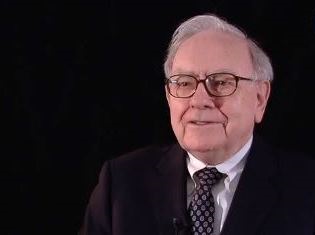Cars and Drivers
Warren Buffett Gets in the Car Dealership Business
Published:
Last Updated:
Warren Buffett is on the move again. Thursday morning he announced that Berkshire Hathaway Inc. (NYSE: BRK-A) had entered a definitive agreement to acquire the Van Tuyl Group. The transaction is expected to be completed in the first quarter of 2015. The Van Tuyl Group has over $8 billion in revenue and has 78 independently operated car dealerships spanning 10 states. The company’s site talks about its presence in Arizona, Kansas and Texas.
The Van Tuyl Group was founded in 1955 by Cecil Van Tuyl who would later pass the mantle to his son, Larry Van Tuyl. In the United States, the company is the largest privately owned auto dealership group, ranking fifth among all auto dealership groups.
The company will change its name to Berkshire Hathaway Automotive and will retain Larry Van Tuyl as chairman. Jeff Rachor will assume the position of CEO. Berkshire Hathaway Automotive will be headquartered in Dallas, Texas.
To show just how much this industry can consolidate, we included a historical dealer count from the National Automobile Dealers Association (NADA). The number has declined steadily through time, but there is still a massive opportunity for consolidation here.
ALSO READ: Cars With the Oldest Buyers
Warren Buffett commented on the transaction:
The Van Tuyl Group fits perfectly into Berkshire Hathaway from both a financial and cultural viewpoint. Larry Van Tuyl along with his father, Cecil, spent decades building outstanding dealerships operated by local partners. In recent years, he has shared management with Jeff Rachor, a seasoned auto retailer who will retain a financial interest in all dealerships. This is just the beginning for Berkshire Hathaway Automotive.
Number of Franchised New-Car Dealerships (NADA), by Year and by count
1947 45,500
1948 46,000
1949 49,200
1950 47,000
1951 47,500
1952 46,000
1953 45,200
1954 41,900
1955 40,400
1956 41,000
1957 40,000
1958 37,300
1959 36,400
1960 35,000
1961 34,500
1962 34,200
1963 33,700
1964 33,500
1965 33,700
1966 32,900
1967 32,000
1968 31,100
1969 31,000
1970 30,800
1971 30,300
1972 30,100
1973 30,100
1974 30,000
1975 29,600
1976 29,300
1977 29,100
1978 29,000
1979 28,500
1980 27,900
1981 26,350
1982 25,700
1983 24,725
1984 24,725
1985 24,725
1986 24,825
1987 25,150
1988 25,025
1989 25,000
1990 24,825
1991 24,200
1992 23,500
1993 22,950
1994 22,850
1995 22,800
1996 22,750
1997 22,700
1998 22,600
1999 22,400
2000 22,250
2001 22,150
2002 21,800
2003 21,725
2004 21,650
2005 21,640
2006 21,495
2007 21,200
2008 20,770
2009 20,010
2010 18,460
2011 17,700
2012 17,540
Let’s face it: If your money is just sitting in a checking account, you’re losing value every single day. With most checking accounts offering little to no interest, the cash you worked so hard to save is gradually being eroded by inflation.
However, by moving that money into a high-yield savings account, you can put your cash to work, growing steadily with little to no effort on your part. In just a few clicks, you can set up a high-yield savings account and start earning interest immediately.
There are plenty of reputable banks and online platforms that offer competitive rates, and many of them come with zero fees and no minimum balance requirements. Click here to see if you’re earning the best possible rate on your money!
Thank you for reading! Have some feedback for us?
Contact the 24/7 Wall St. editorial team.